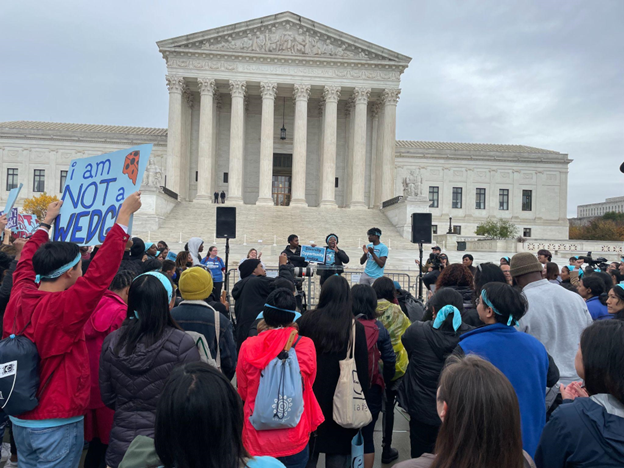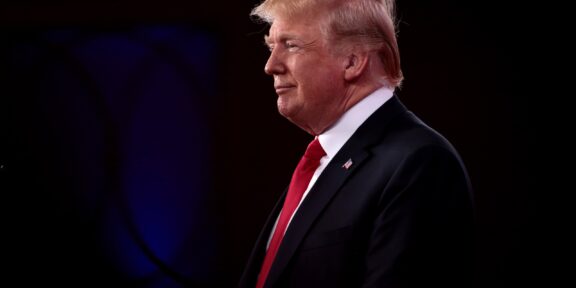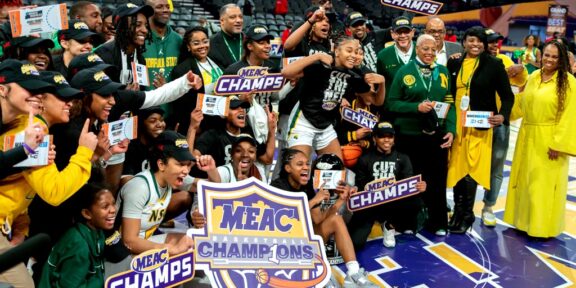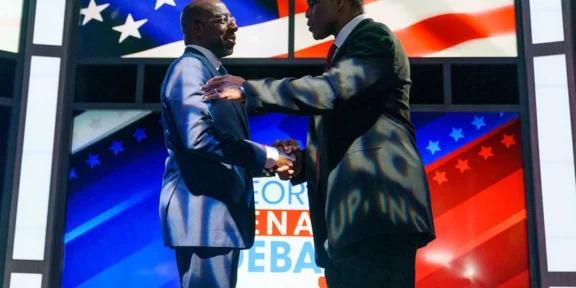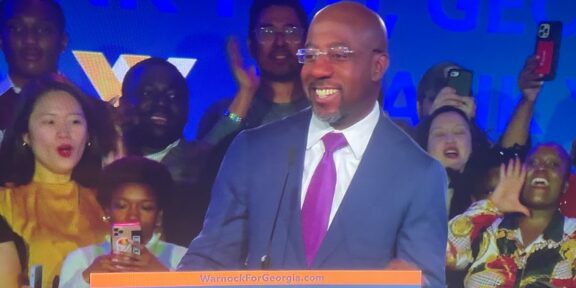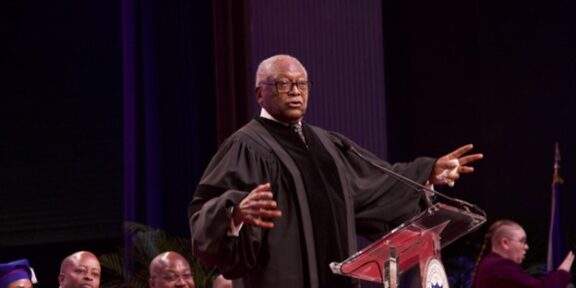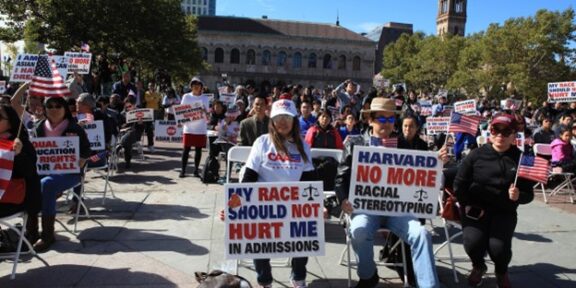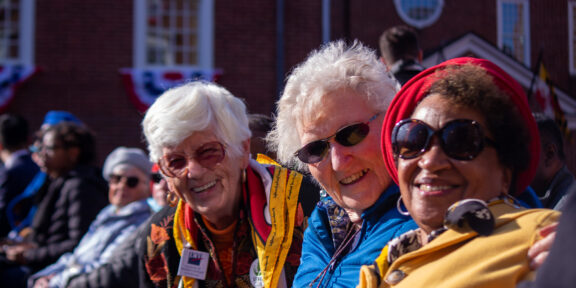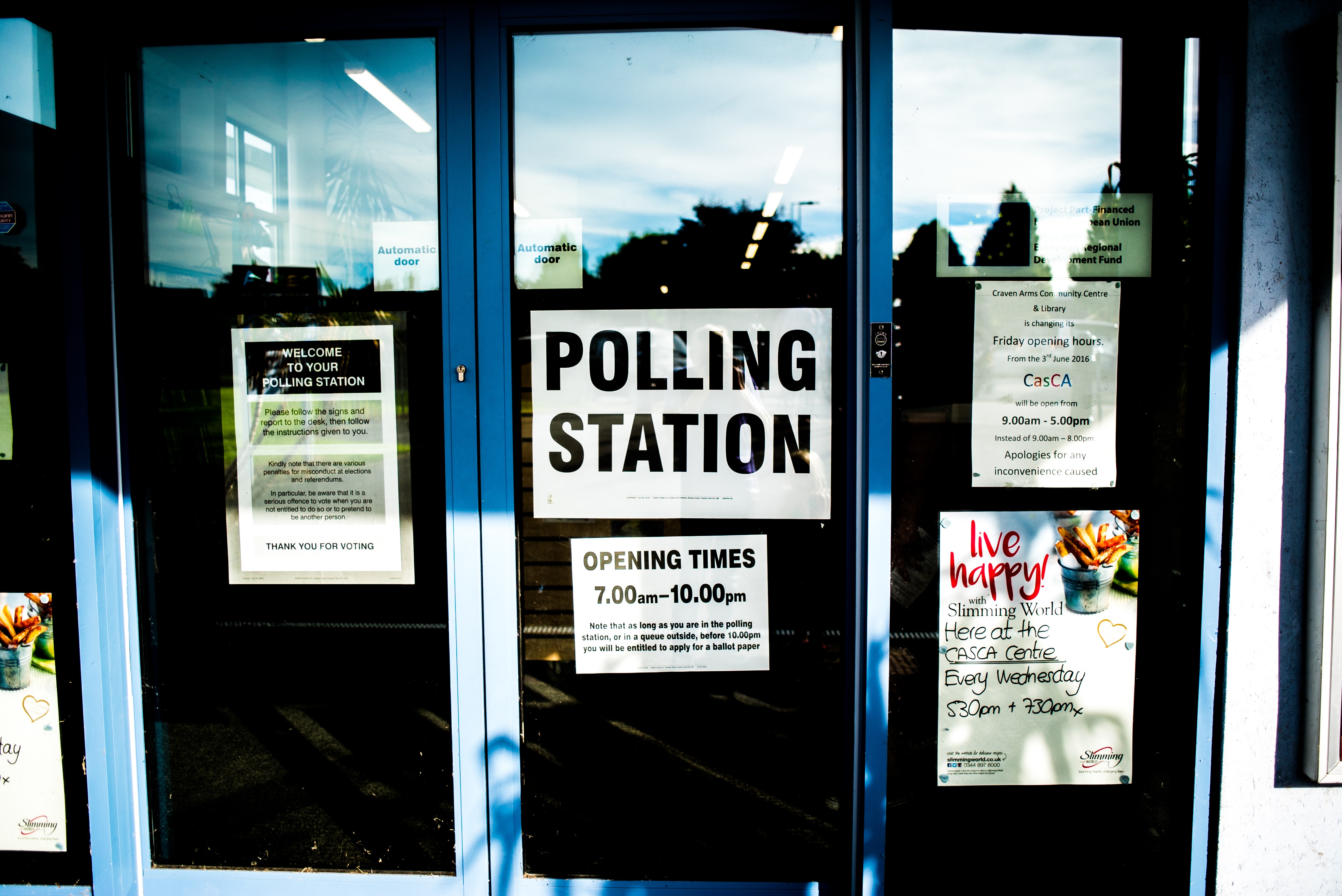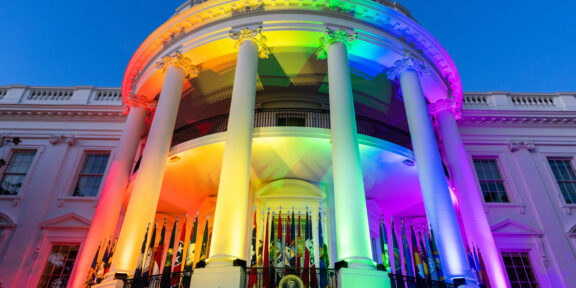By Joshua Heron
Howard University News Service
Education officials, civil rights leaders, employers and students are debating the implications of the U.S. Supreme Court’s stance on affirmative action, which is forcing colleges and universities to brainstorm and implement new policies that ensure racial diversity on campus is consistent.
Janai Nelson, president and director of the Lawyers Committee for Civil Rights Under Law, reminded students and admissions officers that the Black story still matters and that diversity on college campuses is not an afterthought.
“While we are all disheartened and dismayed by this decision, we are also clear about the mandate we’ll have before us,” Nelson said. “And that is not to abandon the project of diversity, but to double down on it because that is what our democracy requires.”
“The court said nothing in today’s opinion about a student or applicant not using their race as part of their admission submissions to explain their lived experience and to talk about how it has impacted their lives,” Nelson said during a press conference held by the Leadership Conference on Civil and Human Rights, following the courts’ decision on Thursday.
In a 6-3 vote, the Supreme Court deemed race-based affirmative action unlawful, prohibiting colleges and universities from considering race as a factor in the admissions process.
In October, the Supreme Court heard oral arguments in Students for Fair Admissions v. University of North Carolina and Students for Fair Admissions v. President and Fellows of Harvard College. In 2014, conservative activist Edward Blum sued Harvard University and the University of North Carolina-Chapel Hill over their use of race-conscious admissions.
Armando Gimenez believes race played a factor in his acceptance to Columbia University based on the demographics of the Ivy League school in New York City.
“I would like to believe that I would have still been admitted into Columbia if they did not consider my race, but I cannot deny the facts,” Gimenez, a first-year student, said.
“Looking at the demographics and my fellow peers I believe race played a large role in my admittance, and I may have not been admitted if not for the consideration.”
The Supreme Court’s ruling affects not only predominantly white institutions like Columbia, but also HBCUs.
Howard University President Wayne A.I. Frederick fears the ruling will create an immense burden on HBCUs in terms of enrollment — one too cumbersome to carry. He revealed those fears on CNN following the breaking news.
“Historically Black colleges and universities are carrying an outsized burden to diversify so many industries in America. We represent only 3% of the higher [education] institutions, but we are responsible for 25% of the bachelor’s degrees,” Frederick said.
“By not allowing race to be considered in admissions elsewhere, you can put an even more outsized burden on historically Black colleges and universities who don’t have the capacity to carry that type of a burden.”
According to a Best Colleges study, “an overwhelming majority of college students believe racial/ethnic diversity improves the social experience (62%) and learning environment (59%) of schools.”
However, the study also reveals that one-third of Black students are actually against affirmative action. More students from racial and ethnic groups than white students “report negative impacts of race-conscious college admissions.”
Though its intent may be to create opportunities, its impact, according to some Black students, has not been the best. Jerry Charleston, a recent graduate of the University of North Carolina, agrees to an extent, but believes affirmative action hasn’t been around long enough to access its impact.
“Although affirmative action has been extremely beneficial for the minority groups that it applies to, it has also had some issues in its productivity for these groups,” Charleston said.
Charleston does believe affirmative action’s intent to provide equal opportunity will not be reached because of the court’s decision.
“The problem now, I believe, is that it is being repealed severely prematurely before its effects can really be seen universally among all groups of people.”
“An even bigger issue is that it is starting with two schools that are historically ‘white legacy’ schools,” Charleston said. “It has only been around since the ’60s which is on average two to three familial generations of people who would actually experience the effects. That isn’t long enough to create a legacy within an institution or business. I don’t believe it has actually been around long enough to produce lasting effects or changes to overwrite a longer history of inequalities in education and occupation.”
Chief Justice John Roberts condemned Harvard University and the University of North Carolina in the conservative majority opinion.
“The Harvard and UNC admissions programs cannot be reconciled with the guarantees of the Equal Protection Clause [14th amendment],” Roberts said. “Both programs lack sufficiently focused and measurable objectives warranting the use of race, unavoidably employ race in a negative manner, involve racial stereotyping and lack meaningful endpoints. We have never permitted admissions programs to work in that way, and we will not do so today.”
The three justices who voted in favor of affirmative action included Justice Ketanji Brown Jackson, Sonia Sotomayor, and Elena Kagan. Jackson and Sotomayor wrote fierce dissent opinions in response to the conservative majority.
“The best that can be said of the majority’s perspective is that it proceeds (ostrich-like) from the hope that preventing consideration of race will end racism,” Jackson said. “But if that is its motivation, the majority proceeds in vain. If the colleges of this country are required to ignore a thing that matters, it will not just go away. It will take longer for racism to leave us. And, ultimately, ignoring race just makes it matter more.”
Sotomayor added, “today, this Court stands in the way and rolls back decades of precedent and momentous progress.”
Sotomayor defended her claims with statistics from University of California, Berkeley. California was the first state to ban affirmative action at public universities.
“At the University of California, Berkeley, a top public university not just in California but also nationally, the percentage of Black students in the freshman class dropped from 6.32% in 1995 to 3.37% in 1998,” Sotomayor said.
The decline in diversity now seems inevitable, observers say.
Georgetown University Center on Education and the Workforce examined the success probability of six admission models. “When it comes to the goal of equalizing college opportunity across advantaged and disadvantaged racial/ethnic and socioeconomic groups, there is no good substitute for the consideration of race,” the center reported.
Following the court’s decision, Howard University released a statement warning of a ripple effect across the country.
“The decision will not only have a devastating impact on the diversity of colleges and universities across the country, but will also decrease access to higher education for students of color everywhere,” the university said. “Education is still a top driver of economic success for all Americans, and this decision will have far-reaching ramifications for those seeking equity in the college admissions process and beyond.”
Charleston said he would have applied to an HBCU if race-based affirmative action had been removed during his college application season.
“If my race, ethnicity or specific background is viewed as a hindrance by reviewers when processing an application, then I would rather attend a school that would accept the potential benefits and drawbacks experienced from a certain upbringing and see that the accomplishments of what I or any other minority are capable of are worth investing in to see growth, such as an HBCU dedicated to that very thing,” the recent UNC graduate said
Gimenez said his decision to apply to an Ivy League school would have remained the same if race was not a factor on his application; however, his pool of HBCU schools would have expanded.
“If affirmative action was illegal, it would not have stopped my pursuits for an Ivy League college and Columbia. I would have applied to more HBCUs and put more consideration into my environment and peers.”
Proponents of affirmative action say the burden falls back on the Black race — the Black race that shouldn’t be considered when education is at stake. However, they point out, race had a role in what water fountain one drank from, how long one went to jail because of crack-cocaine disparities and whether a hoodie deems one worthy of death.
So much, they say, for “post-racial” America.
Joshua Heron is a recent graduate of Howard University and reporter for HUNewsServie.com. He will be pursuing a master’s degree at Arizona State University in the fall. The article is part of Howard’s Third Reparations project for the inaugural Solutions Journalism Student Media Challenge.

